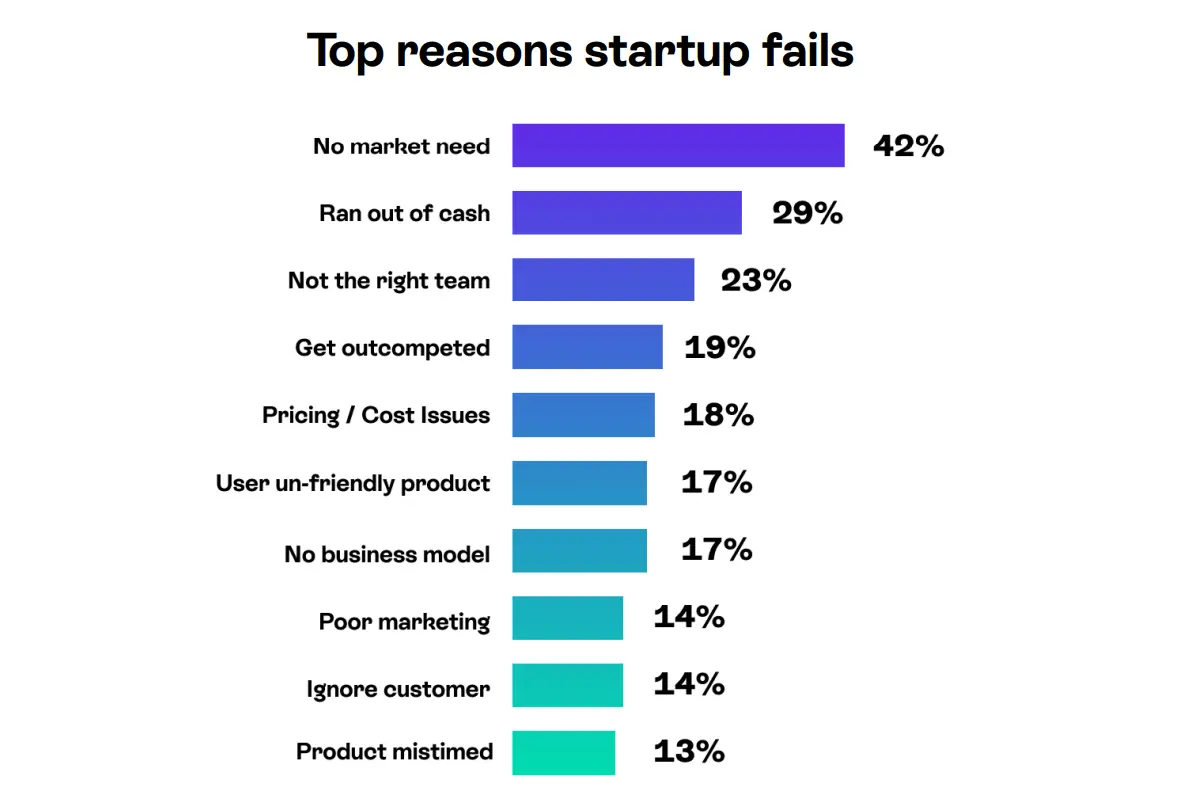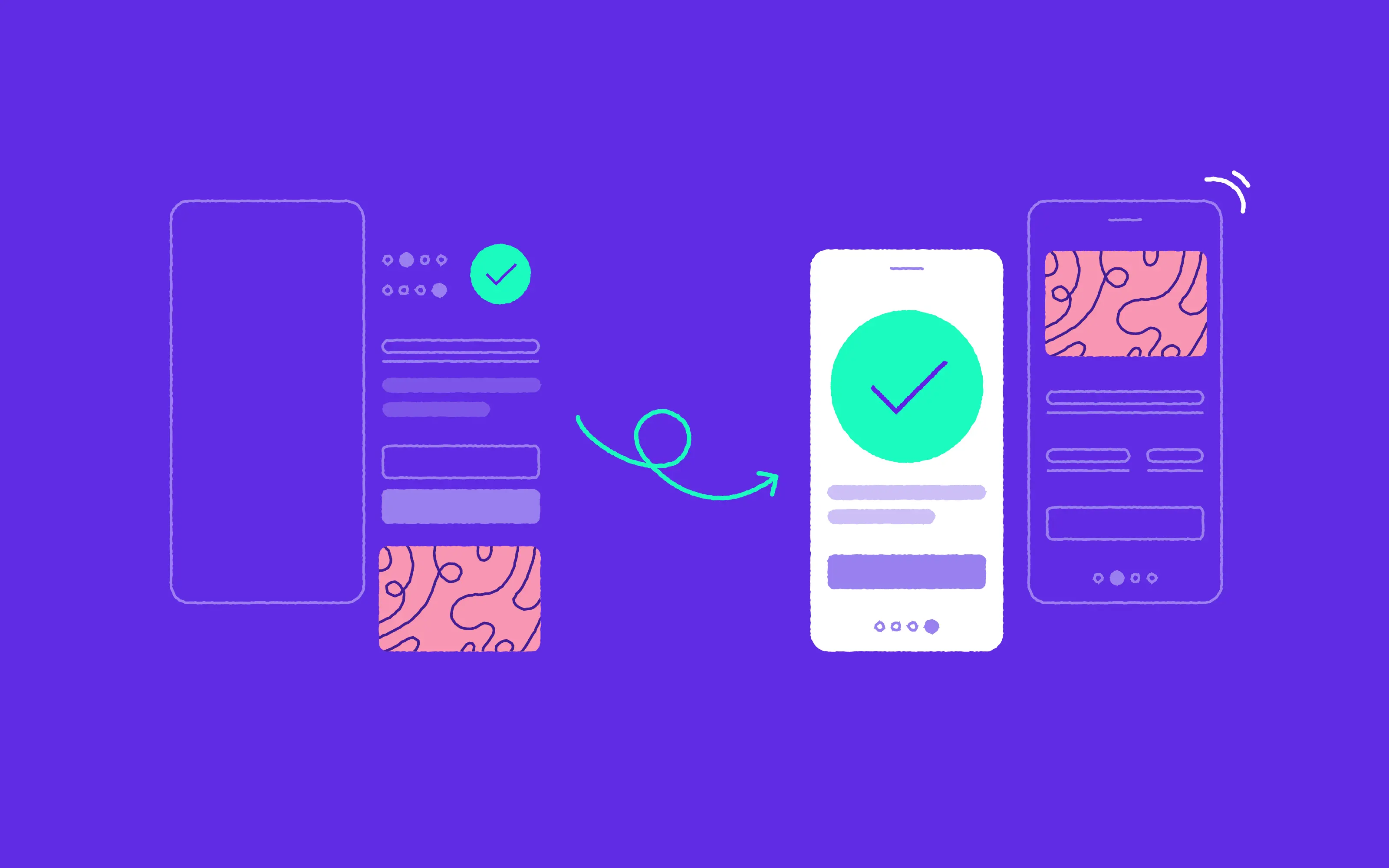Design Is the Secret Weapon for Crisis. 5 Ways to Unlock Your Business's Hidden Power
08.02.2023 | 7 min read

It ain't easy these days. The crisis is looming, inflation is increasing, and investors are avoiding funding your entrepreneurial dreams. Sounds familiar, doesn't it? If you think that it's time to wrap up and get back to your 9-to-5 job, allow me to stop you from pushing this idea forward. Remember that design is a great tool that, when used in the right way, can add momentum to your business.
The truth is rough. The world saw 3,002 new businesses start up in 2018. But 90% of new businesses fail in the beginning. Crossing the big chasm is something that many startups won't even think about. Many will put out their MVP, and that will be it.
If you look more closely at why startups fail, you'll find that the number one reason is that the product doesn't solve a problem, because the founders made the wrong assumption about the need or problem. Either they put too much money into it or they take too long to get it to the market.
Also, perhaps they hired too many specialists or didn't hire the right ones. Last but not least, the product might be hard to use or its creators didn't listen to their customers.

Design Can Help When Decision-Making Goes Sideways
A good design has to be made for a reason. The goal is to give the users as much value as possible. How it affects their lives and how it could make their lives different. Design's job is to find the reason for something and show it to people in a way that helps them understand why it's important. How something is made is a way of thinking that is centered on solving problems and giving value.
Design quality shouldn't be the only and most important goal. Yes, people will be drawn to well-designed things because we like pretty things, but if it lacks content and an answer to the question "Why should I use it?" It will just be another pretty thing that people might get excited about for a while but then forget about or stop using.
It’s fair to say that design is a business tool, and it should have a seat at the table and a voice that helps the business succeed. Design is not a bitmap; it gives a product a reason and a goal, which are then turned into a useful and attractive product. Design knows what makes a business tick; it is a partner. You've always had it, but you've never been brave enough to use it to its full potential.
You have to know what kind of change you want to make. The change won't be possible until then. The way your business acts and what it stands for is based on its company values. They should affect everything about your business, from how you market it to how you treat your customers.
You have to find the right balance between having a plan and carrying it out. Making sure you have the right processes in place will keep you from making decisions that haven't been researched, tried, or aren't focused on the user.
Also, design is about making connections that will last. We want to give more than we promise. We want this to be memorable and fun, with as little mental friction as possible.
Start Thinking About UX, or You're Doomed
UX is the next thing that should be top of mind. Let’s relate this to your business. Do you ignore UX? Or does UX exist at every level of your company? When you reach a high level of UX maturity, you get insights that help you make great user-centered designs.
UX maturity isn't just a nice thing to have. Your product and company will stand out from competitors if you have a clear UX strategy and a high level of UX maturity.
Improving UX can mean pivoting. But it's not about the number of pivots. It's about deciding what is required to do one. By putting money into UX research and design, many companies were able to figure out the direction of their pivot.
UX maturity can only be reached if everyone in your company works together and is focused on making solutions that are good for users. The concept phase not only reduces delivery time but also increases product usability, as collaboration with product development sparks technical solution innovation.

Honey, Have You Seen My Cool Factor?
Don't focus on the "cool" factor at first. Instead, let your users reach a peak experience when they find your product. This will make them more likely to keep using your product. Your design has an edge because it is cool. You have to be different. If you try to beat your competitors, you'll just look like them.
Your edge could be a unique feature, great branding, or a funny way of speaking. anything that gives you personality and makes you more like your archetype user. The truth is that a customer will be happier with your product if the interface is both beautiful and easy to use.
Your product doesn't solve a problem because you made the wrong guess about what the problem or need was. Either you put too much money into it or you take too long to get it to the market.
You either hired too many specialists or didn't hire the right ones. There are companies out there that are faster, have a better edge, and have a higher level of UX maturity. Your product is hard to use or you didn't listen to what the customer said.

How to Use Design to Unleash Business Potential
What does it all mean? Design goes beyond bitmaps. It is a way to decide what to do based on research. Design helps people make decisions when they don't know what to do. Here's what you should do.
1) Design Thinking
Start by changing the way you think. Design thinking is a way to make choices that are based on research. It starts with a mental shift. The first step in design thinking is to stop being so focused on the problem. You should care a lot about the people who use your product and how it affects their lives. Design is an asset for a business that can make this process easier and help answer the question "Why?" What? And how?
2) Find the Right People to Work With
Choosing the right consultants to work with at the start of your validation phase can only help. They know how to do it. They know the market, the trends, and how to raise the level of UX maturity.
3) Research Through Design
At this point, you need to move from design thinking to design. To make better decisions in the future, you have to make things, try them out, and learn how they work.
4) Continuous Discovery
It helps to know what you are shipping and whether or not your guesses are right. "Continuous discovery" is just keeping in touch with your clients and users on a regular basis. Ideally, you should do it every 1-2 weeks. That’s the only way you can actually have a channel of communication between your company and your users. And that allows you to gather the information to influence the process of making decisions.
5) Passion and Patience
Your mission as an entrepreneur or founder is to affect social change. Your financial success is going to be a measurement of how many users are following your vision. People love working with passionate founders who inspire them, knowing how passion can change the world and influence the lives of others. You have to be patient with what you are doing. You cannot expect quick wins. You have to do, try, test, learn, and do it again. You might have only one chance, and you have to do it with the right people.

Conclusion
Design plays a critical role in helping businesses navigate and overcome challenges during a crisis. By leveraging design thinking, businesses can identify new opportunities, improve user experiences, and differentiate themselves from competitors. Ultimately, incorporating design into the strategy and decision-making process can be the key to scaling up and thriving in even the most difficult times.



